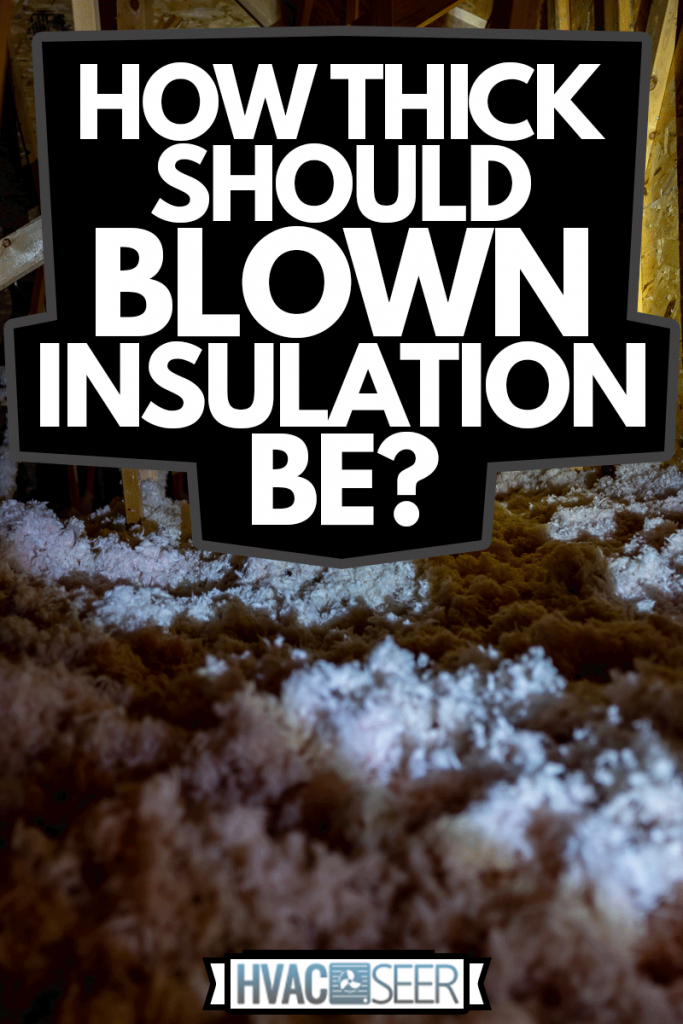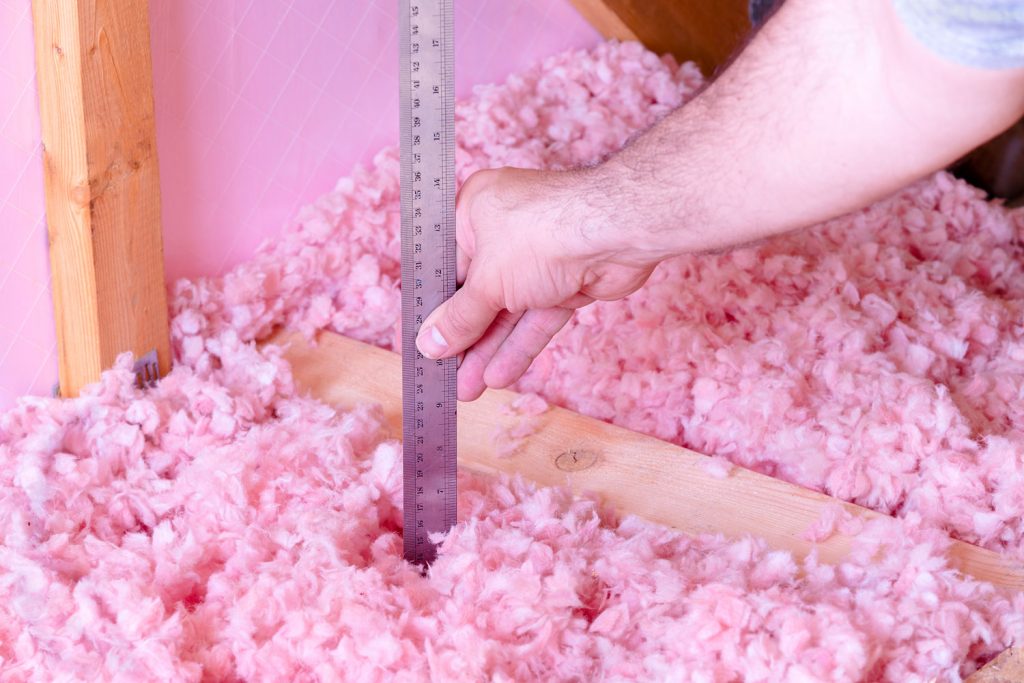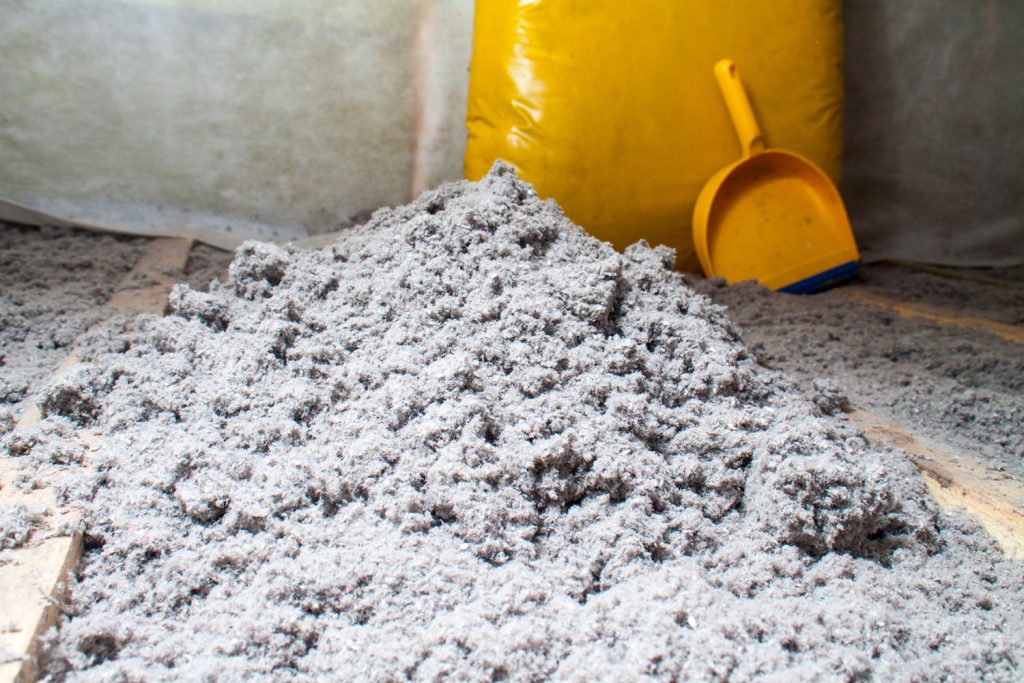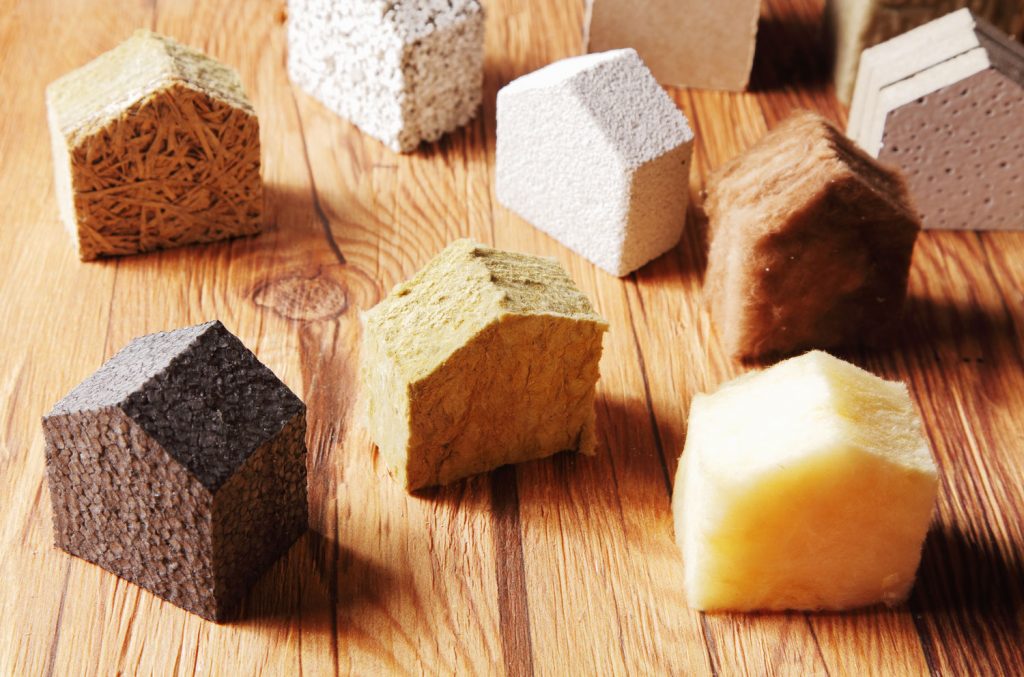With the various insulation types available on the market, it can be hard to choose the right one. However, with some searches on the internet, you might have determined which one works best for you—namely blown-in insulation. But that leads us to our next problem—how thick should it be? If that's what you're wondering, you're in luck because we did the research to bring you the answer.
The first two aspects to consider for thickness are the climate zone and the area you're filling. Wall cavities will need an R-value of R-13 to R-15. Attics will need an R-value of R-30 to R-49. Then, you can adjust by using the general R-value per inch for the product you will be using:
- Loose-fill fiberglass: R-2.5 per inch (12-20 inches thick for an attic)
- Cellulose: R-3.7 per inch (9-14 inches thick for an attic)
- Mineral wool: R-3.3 per inch (9-15 inches thick for an attic)
Depending on your situation, there are more factors that you might have to consider. For example, is it possible to lay new insulation over old insulation? Can there be too much insulation for an attic? And what happens if you over-insulate an area? These are some of the topics we discuss further ahead. Without further ado, let's get into it!

Determining the Thickness

As mentioned, there are some factors to consider when you're trying to determine how thick your blown-in insulation should be. The three main ones are:
- Type of insulation material you're going to be using
- Climate zone
- The area you will be filling
Insulation Material
This factor should be straightforward. The common denominator across all insulation types is the R-value. Each option offers different R-values.
Some will offer an R-value as high as 4.3 per inch. Others won't offer that much, but these options are less expensive. Lastly, one insulation type will cost more, but it has many properties that make it nearly indestructible. So, what are they?
The three types of blown-in insulation you'll have are:
- Fiberglass
- Mineral wool
- Cellulose
Fiberglass
Fiberglass comes in as an in-between option. It can offer the most R-value at 2.2 to 4.3 compared to mineral wool and cellulose. But it's not as cost-efficient as cellulose.
In terms of weight, it's the lightest. Though, some suggest it tends to settle very quickly which means you'll need a thicker layer than expected to account for this.
Cellulose
Cellulose comes in as the low-cost option. It offers an R-value that can compete with the others at 3.2 to 3.9. It comes from recycled paper that is treated for insect and fire resistance.
Cellulose is easily the most common choice for cost efficiency and environmental friendliness. The downside is that it can grow moldy from heavy water damage.
Mineral Wool
Last but not least, mineral wool is the most expensive option of the three. Regarding R-value, it has a rating of 3.1 to 4.0. While it might not seem like a good choice, it offers the most benefits of the bunch. It's highly fire-resistant, water-resistant, and mold-resistant.
While it might not be the most cost-efficient choice, it might make sense to use this type over the other two in some cases.
As a reference point, we'll repeat the R-values of each type in a single list:
- Mineral wool: R-value of 3.1-4.0 per inch
- Fiberglass: R-value of 2.2-4.3 per inch
- Cellulose: R-value of 3.2-3.9 pinch
Climate Zone
Your climate zone dictates how thick blown insulation should be because some zones will not need as much insulation. Think of it like this—someone in California won't need to purchase a thicker jacket than someone living in New York. It's the same thought process with insulation.
Some zones will need more blown insulation to keep the warmth inside and the cold outside. In general, you'll need less insulation if you live in zones 1-4. Zones 5-8 will need more.
Area You Are Filling
The area you will be filling with new insulation also matters because some areas might not need a high R-value. For example, walls will need an R-value of 13 to 15. The attic is the area where you will need the most insulation. You'll need an R-value around 30 to 60.
In this instance, your climate zone dictates where your R-value needs fall. As mentioned, climate zones 1-4 will need less while climates 5-8 will need more.
Putting It All Together
Now we can apply all the information above to our situation. So, if you have an uninsulated attic, you'll need an R-value of 30 to 49 for climate zones 1-4. If you've decided on using fiberglass, this means you'll need 12-20 inches of thickness.
Cellulose holds an R-value of 3.7 per inch. Insulating an attic will require 9-14 inches of thickness.
Lastly, mineral wool will generally hold an R-value of 3.3 per inch. To insulate an attic, you'll need 9-15 inches of thickness.
Walls
Walls will require less material. In general, they'll need an R-value of 13 to 21. Going by the same values above, you'll need 5-9 inches of thickness if you choose to go with fiberglass.
You'll need 4-6 inches of thickness if you're using cellulose. Lastly, you'll need 4-7 inches of thickness when opting to use mineral wool.
Additional Notes
One final aspect to consider is the issue of settling. This problem applies to the fiberglass and cellulose insulation options. Over time, it will settle which means you're going to lose R-value. If you want to keep an adequate R-value over time, you might want to add more than the suggested amount above.
For more information, here's a YouTube video explaining the issue of settling:
Can I Put New Insulation on Top of Old?
In some situations, you might not be insulating an uninsulated area. Instead, what you're aiming to do is bring back the R-value that came with your old insulation. It's a common practice for many types of insulation. Some would refer to it as dense packing. It accounts for the lost R-value from settling over time.
So, if you're wondering if it's possible to lay new insulation over old, it's possible under certain conditions.
Signs to Replace Old Insulation
What you'll need to do first is check the condition of the old insulation. If you find any signs of mold, it's best to consult a professional for removal. Although it can be a DIY job, professionals have access to tools you most likely won't have. They also have the experience to tackle the issue promptly.
The other sign of danger is pests. Pests will usually like to nest in materials like fiberglass. That, in itself, is a problem because they might move the material to another area, thus lowering the R-value.
However, the main issue would be the droppings that pests leave. It creates a hazardous environment that can potentially have the waste make its way into the air you breathe. Of course, that's something anyone would like to avoid.
Can You Have Too Much Insulation in an Attic?

With so much to consider, it might seem like a good idea to compensate by blowing in more insulation than many would suggest. This way, you can future-proof the area. You most likely won't have to revisit the spot for many years to come. Would it play out like this?
No—it's possible that you can use too much insulation for your home. It can come to a point where you won't have much return on investment. There isn't a specific measurement to give you a precise answer. It will all depend on the return you get in the form of bills.
As some would put it, you can theoretically see the returns if you add an inch of new insulation to an already existing 5 inches. Say, for example, it saves you $400 a year.
However, if you add a 1-inch layer to 30 inches of insulation, it will take a long while to see the return on that investment. You might not even live long enough to see it!
Is this a problem you're likely to run into? No, not really. Instead, most homes face problems with under insulation. In general, you'll want to follow the requirements that your climate zone dictates.
If you'd like to learn more on this topic, check out this post: Can You Over Insulate An Attic? [And What Happens Then?]
Which Insulation Is Best for an Attic?

Attics will have some hard-to-reach areas that typical batts won't cover. For this reason, blown-in insulation is the best type to use in an attic. Batts are the most DIY-friendly. However, blown-in will offer the most coverage if that's what's most significant to you.
In general, blown-in insulation should only be handled by professionals. However, there is a DIY-friendly option. As some suggest, blown-in cellulose is a good choice for DIYers. It's easier on the skin and lungs.
What Is the R-Value of 12 Inches of Blown Insulation?
The R-value of 12 inches of blown insulation would depend on the type you choose. As a rule of thumb, let's set a general value:
- Fiberglass: R-value of 2.5 per inch
- Mineral wool: R-value of 3.3 per inch
- Cellulose: R-value of 3.7 per inch
Using the values above, 12 inches of blown insulation would give you an R-value of:
- Fiberglass: 30
- Mineral wool: 39
- Cellulose: 44
What Is the R-Value of 14 Inches of Blown Insulation?
Let's follow the values mentioned above to get the R-value of 14 inches of blown insulation:
- Fiberglass: 35
- Mineral wool: 46
- Cellulose: 51
Final Takeaway
Although it might seem simple, there might be more work to do. For the final touches, you'll want to consult a professional! We hope you found the information above helpful.
Before you go, here's another article you can check out:
